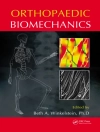Rhinoplasty is one of the most challenging procedures in facial plastic surgery, as treatment has to be carefully tailored for each patient; nowadays the concept of preservation rhinoplasty is particularly sought-after, allowing to conserve cartilage bone structure, and avoiding secondary surgery with costal grafts. Thought for the young surgeon in training, this richly illustrated clinical cases atlas in rhinoplasty offers all needed tools to correctly classify the malformation and choose the best reproducible treatment. Chapters clearly illustrate the principal approach with closed technique, to which specific parts on transcolumellar approaches are added, beginning with the simpler cases and progressing stepwise to more complex cases. Each part is supported by the addition of high quality illustrations and surgical videos to foster the reader’s understanding and preparation of practical steps and best choices, offering direct support in the operating room. The chapters move fromthe clinical examination, to photography, topography and deformation measurement (TDM) in 3D, computer simulations and the building of a dedicated preoperative check list to endure a careful patient approach and secure the best outcomes for the most frequent rhinoplasty cases. Plastic surgeons in training and ENT doctors alike will find this Clinical Atlas of Primary Rhinoplasty to be a handy guide to resort to, when wanting to improve their daily practice.
Via app: download the SN More Media app for free, scan a link with play button and videos directly on your smartphone or tablet.
Spis treści
Foreword by Y. Saban.- Preface by the author.- I Clinical cases for the Caucasian nose.- 1 Straight nose.- 2 Straight nose with hump.- 3 Asymmetric nose dorsum. – 4 High radix nose.- 5 Low radix nose.- 6 Nose with septum hypertrophy tension.- 7 Long columella nose.- 8 Nose with short columella.- 9 Alar malposition.- 10 Hypertrophy of the nostrils.- 11 Nose with thick skin.- 12 Thin skinned nose.- 13 Hyper-projected nose.- Hypo-projected nose.- II Clinical cases by different geographic or ethnic groups.- 14 Asian nose patients.- 15 African nose patients.- 16 Mediterranean nose patients.- 17 Oriental nose patients. – 18 Latin American nose patients.- 19 Clinical interventions and trends: patient expectation management.
O autorze
Doctor Sylvie Poignonec is a French plastic and head and neck surgeon specialized in rhinoplasty, recognized and qualified by the French Order of Medical Doctors and National Health Authority, as well as by the European Plastic Surgery Board EPOBRAS. Active member of the French Society of Reconstructive Plastic Surgery & Aesthetics SOFCRPE and SOFCEP and member of the AAC Label Expert Panel, former vice president of the French Society of Continued Learning in Aesthetic surgery, Dr Poignonec has 25 years of experience in plastic, oral and maxillofacial surgery, especially at Bichat and Pitié Salpêtrière hospitals in Paris, performing over 2000 rhinoplasty interventions both aesthetic and functional. While adding to her experience, her teaching at APHP medical school and at a large number of surgery and aesthetic courses and workshops led her to open her own private clinic, while still working for the APHP National Health Paris Hospitals as consultant. She has authored and co-authored several books on cosmetic surgery and anti-aging medicine and been given the Best Clinical Case Award in Rhinoplasty at 2015 AMEC congress. Her teaching techniques and didactic concept for surgeons in training include clinical examination, photography, Tomodensitometry (TDM) in 3D, computer simulations and the building of a dedicated check list that allows a careful patient approach and the best outcomes for the most frequent rhinoplasty cases.












